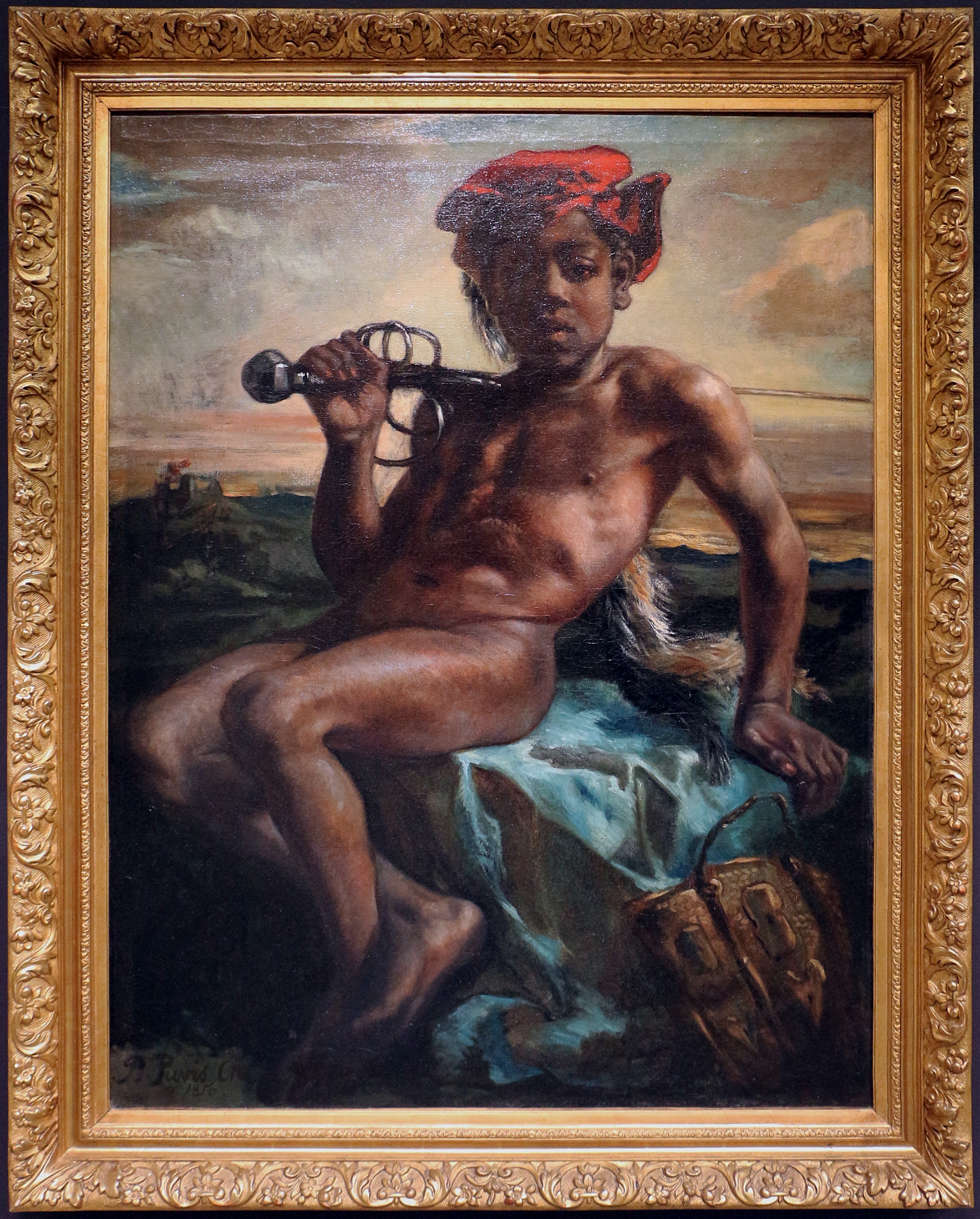
Pierre Puvis de Chavannes (France, 1824–1898)
Jeune noir à l'épée (Young black boy with a sword)
oil on canvas
105 x 73 cm. (41.3 x 28.7 in.)
Painted in 1850
Collection of Musée d'Orsay, Paris, France
In Jeune Noir à l'épée (Young Black Man with Sword), Pierre Puvis de Chavannes, then barely twenty-six, overturns aesthetic codes: he dares to apply the conventions of the academic nude (classic studio pose) to a black man, arming him with a sword, and sitting him on a sumptuous cloth, worthy of a Renaissance aristocrat.
The character's serenity contrasts sharply with the drama playing out in the twilight background. It's 1850, and the artist intends to celebrate the abolition of slavery (1848), which provoked violent resistance from planters in the West Indian colonies.
At the time, black people were either invisible or portrayed in a pejorative light. In contrast, Puvis de Chavannes, without escaping the orientalist clichés of Romanticism, chose to portray this young man - whose countless shades of black skin he rendered - in the role of an actor, master of his own destiny.
At the same time, his work echoes Marie-Guillemine Benoist's Portrait de Madeleine, which in 1800 paid tribute to the first abolition of the slave trade by French revolutionaries.










